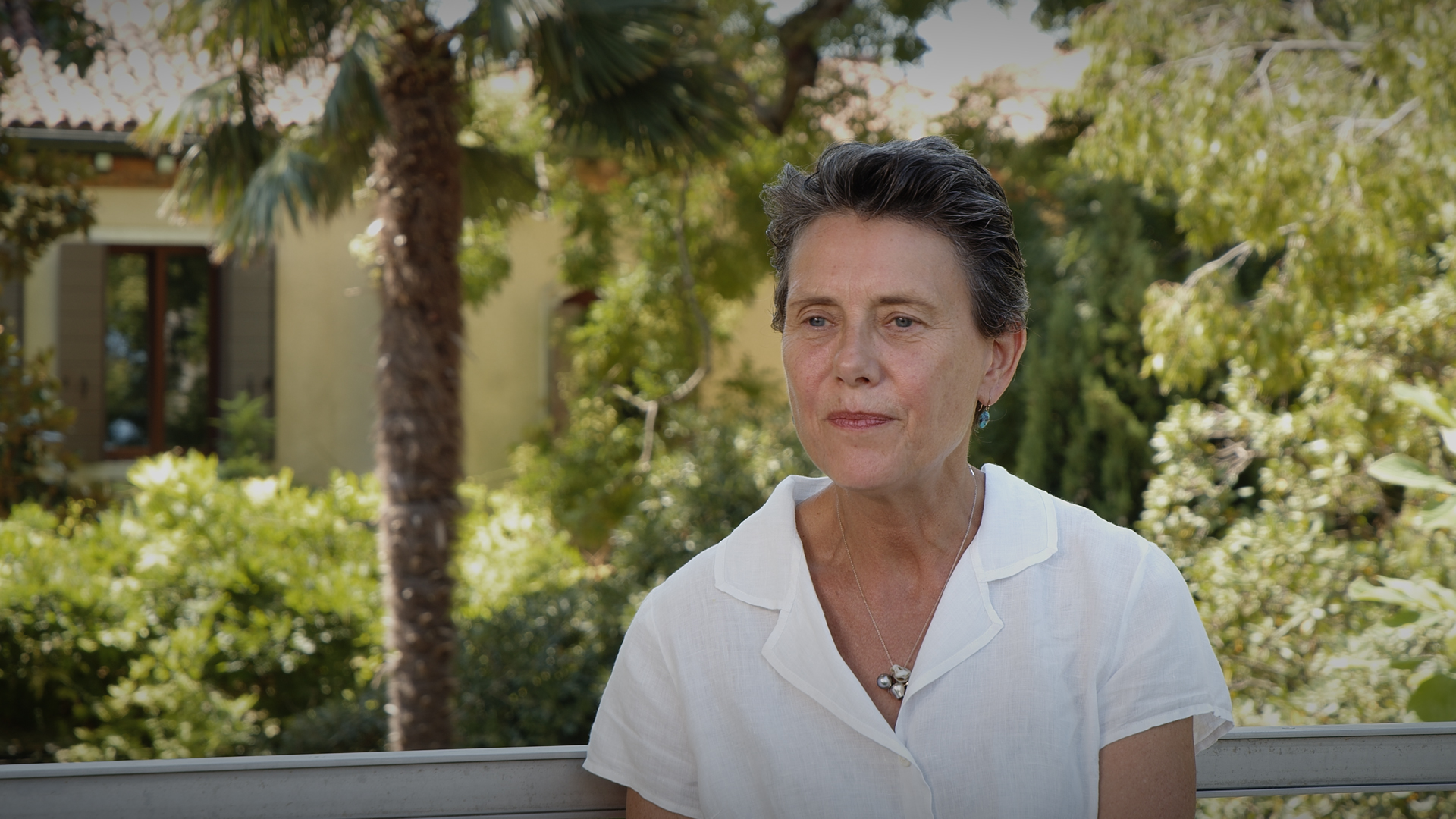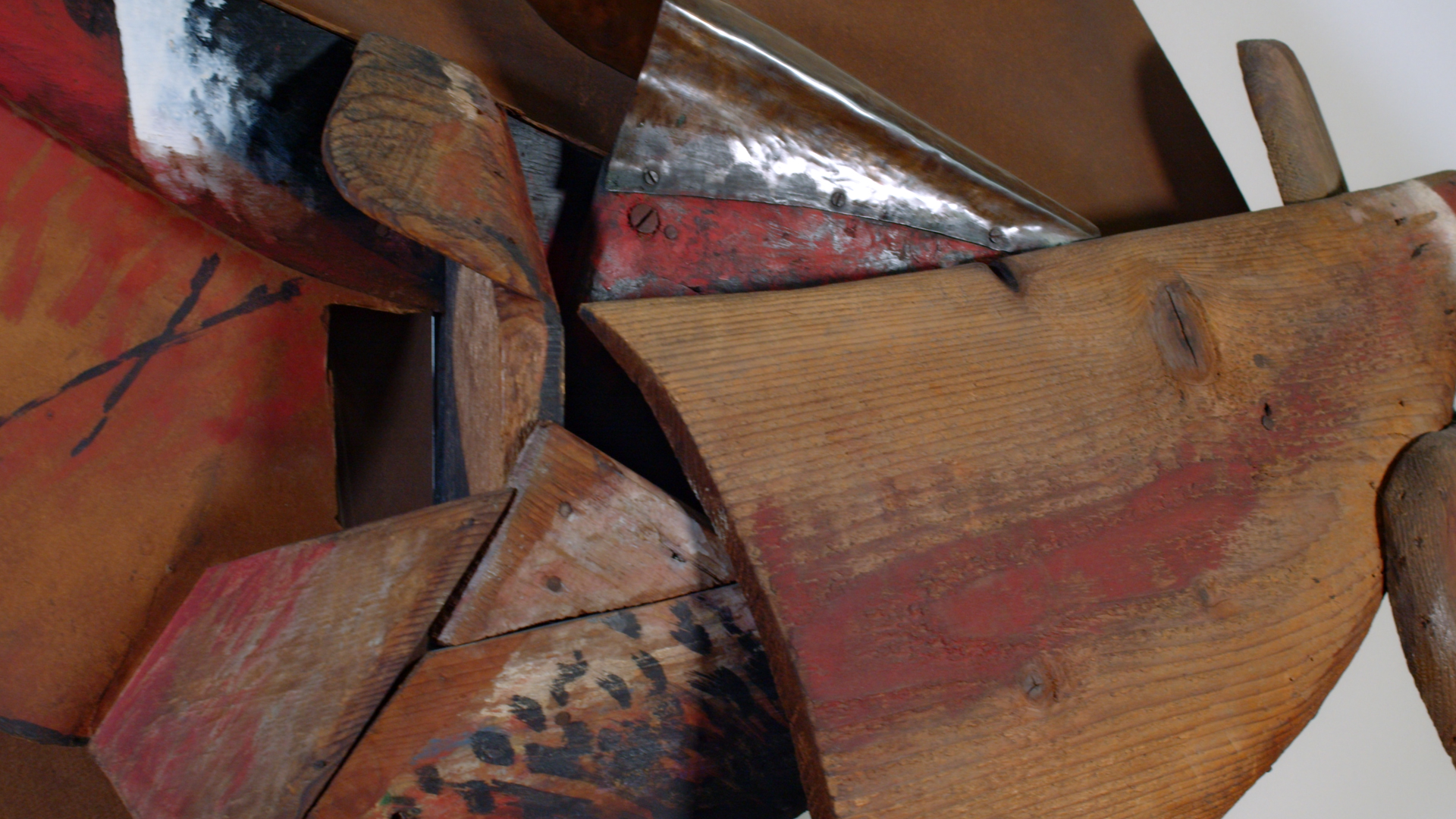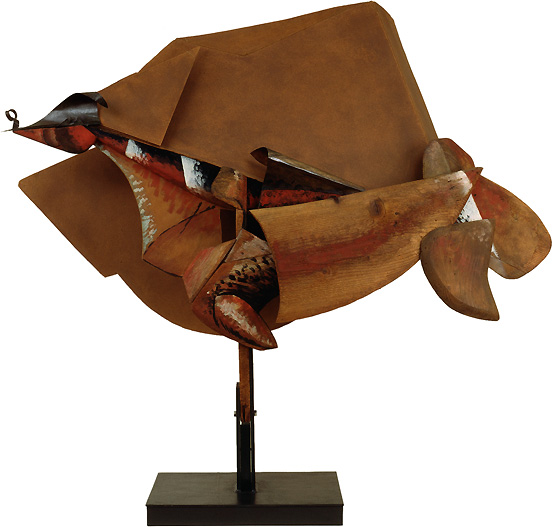Umberto Boccioni, Dynamism of a running horse + case, 1915, Gouache, oil, wood, cardboard, copper and painted iron, 115 × 112.9 cm, Venice, Peggy Guggenheim Collection | Courtesy Peggy Guggenheim Collection, Venice (Solomon R. Guggenheim Foundation, New York) | Still from FORMIDABLE BOCCIONI | © ARTE.it
It is always fascinating to hear a story from those who have lived it closely, albeit indirectly. Therefore we propose here the full interview with Karole PB Vail, a precious point of view on an unforgettable page of art and collecting. The story of an encounter between giants – Peggy and Boccioni – united by a common talent: knowing how to break the rules and imagine the future, anticipating ideas and phenomena that were then unthinkable.

Karole Vail in FORMIDABLE BOCCIONI, Venice, Peggy Guggenheim Collection | © ARTE.it
“Peggy Guggenheim began to devote herself seriously to collecting in the late 1930s, after having been introduced to the avant-garde circles of Paris in the previous decade”, says Vail: “In 1938 she opened her first gallery in London and then, as is well known, , began acquiring one painting a day with the aim of building a collection of modern art. This is why today at Palazzo Venier dei Leoni we find an extraordinary collection dedicated to the European avant-gardes, as well as to the American abstract expressionists. Here in Venice we have the wonderful opportunity to be able to compare ourselves with the art of the early twentieth century and to understand how those artists were changing the way we look at art and interpret it. The most important and innovative movements of that season – Cubism, Futurism, Surrealism – are represented at Palazzo Venier dei Leoni, as well as many examples of sculpture that are radically detached from the tradition of the nineteenth century. Understanding them means being able to better appreciate contemporary art as well ”.
The meeting – which for chronological reasons could only be virtual – between Peggy Guggenheim and Umberto Boccioni passes precisely through a sculpture, today among the masterpieces of the Venetian museum: Dynamism of a running horse + case of 1915.
“Peggy Guggenheim was always very interested in sculpture. When she settled in Palazzo Venier dei Leoni – after exhibiting her collection at the 1948 Biennale – she continued to purchase new works. In 1958 you made an important acquisition, perhaps the last in the field of sculpture: a wonderful unique and extraordinary work by the Italian futurist Umberto Boccioni, ‘Dynamism of a running horse + case’. Boccioni had built it in 1915, just one year before the terrible horse accident that cost him his life. Perhaps this sculpture was never finished, we will never know … It is exceptional because it is one of the very few sculptures of its kind, made with a mix of materials such as cardboard, painted metal and wood … “.
“In 1912”recalls Vail, “Boccioni had written a Manifesto of Futurist Sculpture. He was deeply convinced that sculpture should have open forms, without borders. He was trying to break with the great tradition of Italian sculpture, and he was succeeding: his look forward was futurist in the most authentic way. ‘Dynamism of a running horse + case’ it is probably the latest example of what Boccioni wrote in the Manifesto “.

Umberto Boccioni, Dynamism of a running horse + houses, Detail | Still from FORMIDABLE BOCCIONI | © ARTE.it
After World War II Peggy Guggenheim is not the only one to collect modern Italian sculpture: many American collectors are taking an interest in it. But unlike the others, the tenant of Palazzo Venier dei Leoni is courageous and free of prejudices, and she manages to look at the works of the futurists for what they are: disruptive avant-garde art. “Driven by an interest in sculpture and a desire to get even closer to Italian art while living in Venice, Peggy Guggenheim made a truly remarkable decision by purchasing this Boccioni piece”notes Vail: “For many it would have been quite difficult to acquire a work by a futurist artist who was not in fashion due to his links with fascism. Peggy Guggenheim was breaking the rules once again, just as Boccioni had broken the rules of art in her time “.
64 years after Peggy’s choice, critics, audiences and collectors have embraced her ideas. Thanks to her, Boccioni and the Futurists are at home in the Lagoon, and Dynamism of a running horse + case shines like a jewel within the extraordinary Guggenheim Collection. “In my opinion Boccioni was one of the greatest artists of the twentieth century”Vail concludes: “I think he understood that it was possible to go beyond painting and probably even beyond sculpture. I think he was able to look very far “.

Umberto Boccioni, Dynamism of a running horse + houses, 1915, Venice, Peggy Guggenheim Collection
![]() Read also:
Read also:
• Art in motion. At the Peggy Guggenheim Collection, GEN Z meets photographer Matteo Marchi to talk about Boccioni
• Ester Coen tells Boccioni, the painter who challenged the Cubists with shots of light and dynamism
• The Mattioli Collection at the Museo del Novecento: the story of the protagonists
• Gino Agnese tells Boccioni, the talent rejected in drawing who won the challenge of the twentieth century
• Boccioni and Vittoria, the futurist and the princess. Chronicle of a love outside the box
• That time when the futurists, unknown and misunderstood, exhibited at the Galerie Bernheim-Jeune (selling only one painting)
• Traveling with Boccioni. The masterpieces to be admired in the world
• Boccioni’s masterpieces to see in Italy
• “FORMIDABLE BOCCIONI”: the futurist genius in an unpublished docufilm

